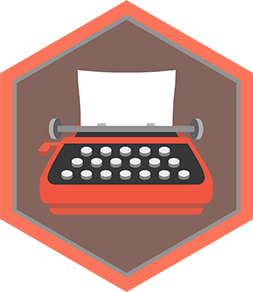Write a short story
Write a short story by creating characters, setting, and simple plot; plan with notes, draft, revise, and illustrate your story to share with others.



Step-by-step guide to write a short story
How to Write a Short Story (for BEGINNERS) | 4 Easy Steps
Step 1
Write the name of your main character and three words that describe them.
Step 2
Write the name of a friend or second character and one thing they like or one trait.
Step 3
Write one sentence that tells where and when your story happens.
Step 4
Write one sentence that explains the problem or goal your main character faces.
Step 5
On a new page write a quick three-line plan labeled Beginning Middle End with one short idea for each part.
Step 6
Think of a short title for your story and write it at the top of a fresh page.
Step 7
Write the beginning of your story in one short paragraph using your Beginning idea.
Step 8
Write the middle of your story in one short paragraph using your Middle idea.
Step 9
Write the end of your story in one short paragraph using your End idea.
Step 10
Read your whole story out loud and circle any sentence that sounds confusing or boring.
Step 11
Rewrite one circled sentence to make it clearer or more exciting.
Step 12
Draw and color a picture that shows the most important part of your story.
Step 13
Write your name as the author on the cover page and add the date.
Step 14
Share your finished story and picture on DIY.org.
Final steps
You're almost there! Complete all the steps, bring your creation to life, post it, and conquer the challenge!


Help!?
I don't have crayons, a fresh page, or access to DIY.org — what can we use instead?
Use colored pencils, markers, watercolor paints, or torn magazine collage for the drawing, reuse the back of a cereal box or taped-together scrap paper as your fresh page for the title and story, and photograph the finished cover and pages to email family or upload to a private cloud folder if you can't share on DIY.org.
My child can't tell which sentences to circle as confusing or boring — how can we troubleshoot that step?
Have your child read the whole story out loud slowly (the step says "Read your whole story out loud") and if they still struggle, ask a friend or parent to listen and mark one sentence that felt unclear or dull so they can rewrite only that sentence as instructed.
How can we adapt this activity for different ages when writing the character names, three descriptive words, and three-line plan?
For preschoolers have an adult write down spoken answers for the main character and one-word traits and draw the Beginning/Middle/End plan together, while older kids can write the three descriptive words themselves and expand each plan idea into a full paragraph as in the instructions.
What are simple ways to extend or personalize the story after the child finishes the paragraphs and picture?
Turn the pages into a small stapled book with the title and author on the cover as directed, add a short audio recording of the child reading the story, create an alternate ending page, and decorate the cover with stickers or a hand-drawn scene that highlights the most important part of the story.
Watch videos on how to write a short story
How To Write a Story For Kids
Facts about creative writing for kids
✍️ A six-word story often attributed to Ernest Hemingway — “For sale: baby shoes, never worn.” — is a famous example of microfiction.
📚 Beatrix Potter's The Tale of Peter Rabbit was first commercially published in 1902 and became a beloved children's classic.
🕒 Many short stories fall in the 1,000–7,500 word range, a handy target for contests and magazines.
🧠 Studies show handwriting notes can boost memory and creativity more than typing on a keyboard.
🎨 Theodor Geisel (Dr. Seuss) famously both wrote and illustrated many of his best-known children's books.
How do I guide my child to write a short story from planning to illustration?
What materials do I need for a short-story writing and illustrating activity?
What ages is this short-story writing activity suitable for?
What are the benefits and easy variations of a short-story writing activity?


One subscription, many ways to play and learn.
Only $6.99 after trial. No credit card required



